20+ SAMPLE Product Launch
-
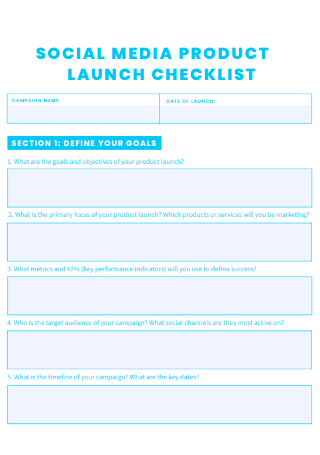
Social Media Product Launch Checklist
download now -
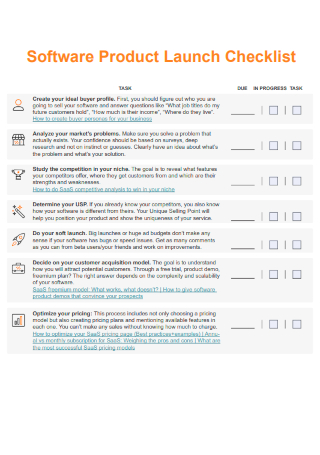
Software Product Launch Checklist
download now -
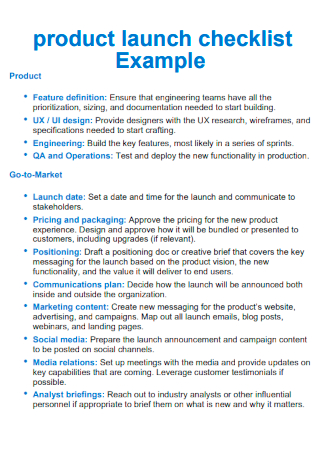
Example Product Launch Checklist
download now -
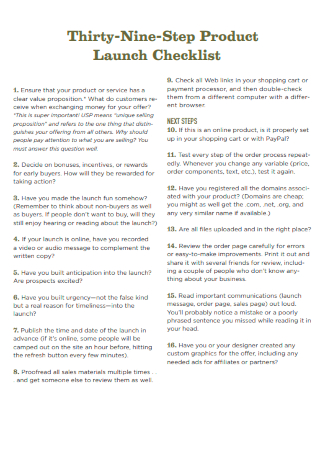
Thirty Nine Step Product Launch Checklist
download now -
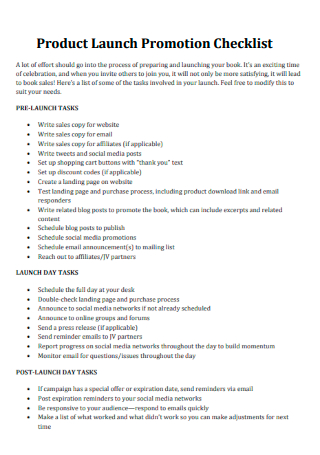
Product Launch Promotion Checklist
download now -
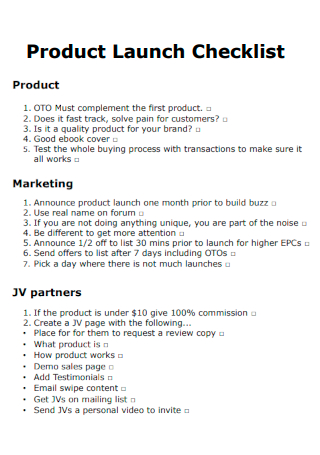
Sample Product Launch Checklist
download now -
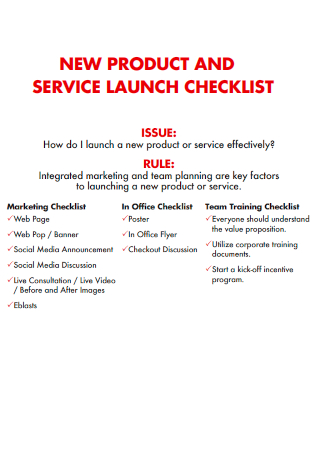
New Product and Service Launch Checklist
download now -
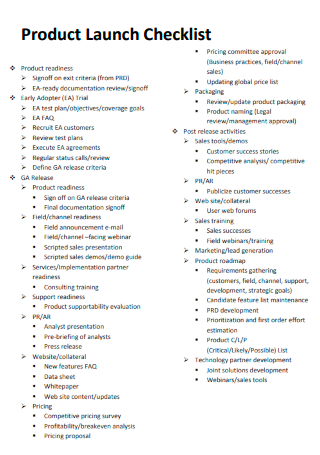
Basic Product Launch Checklist
download now -
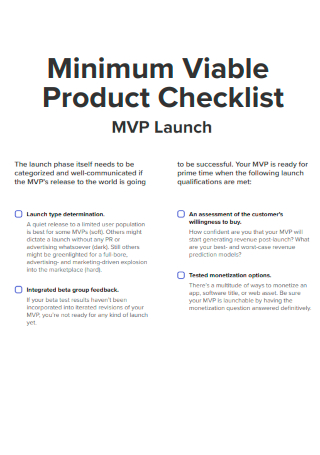
Minimum Viable Product Launch Checklist
download now -
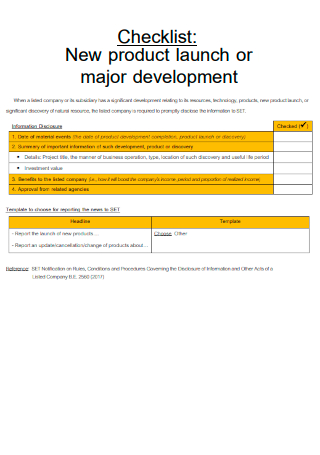
New Product Launch or Major Development Checklist
download now -
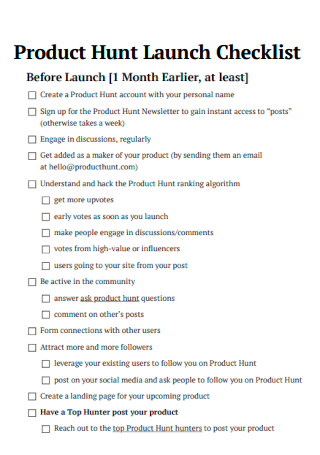
Product Hunt Launch Checklist
download now -
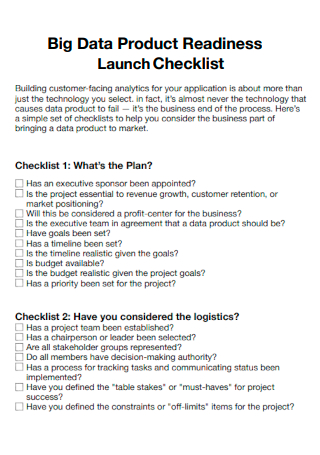
Big Data Product Readiness Launch Checklist
download now -
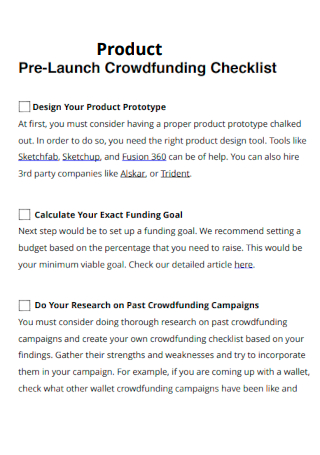
Pre Launch Product Crowdfunding Checklist
download now -

Internal Product Launch Checklist
download now -
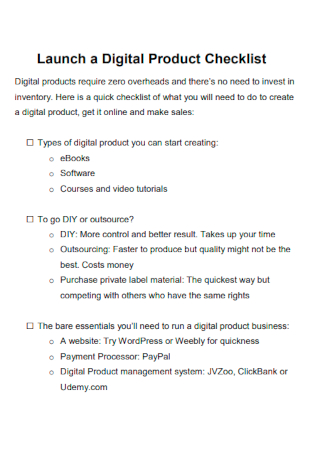
Launch a Digital Product Checklist
download now -
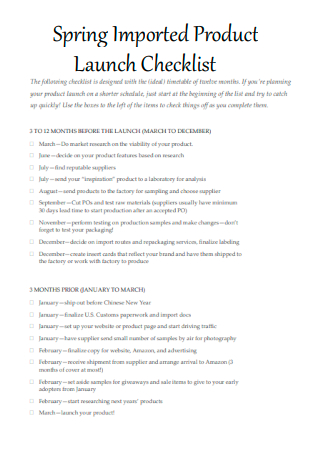
Spring Imported Product Launch Checklist
download now -
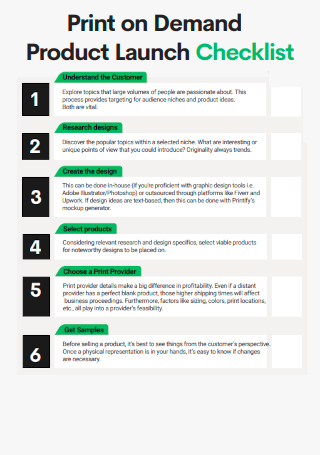
Print on Demand Product Launch Checklist
download now -
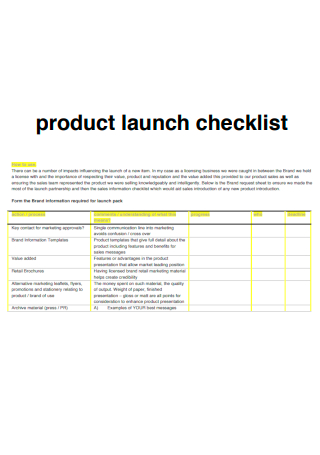
Formal Product Launch Checklist
download now -
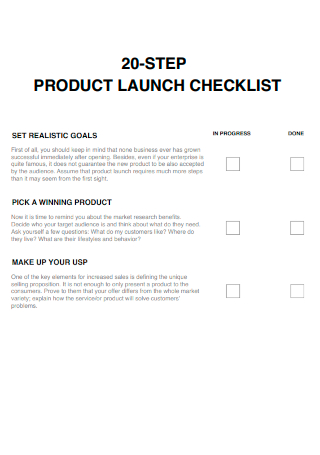
20 Step Product Launch Checklist
download now -
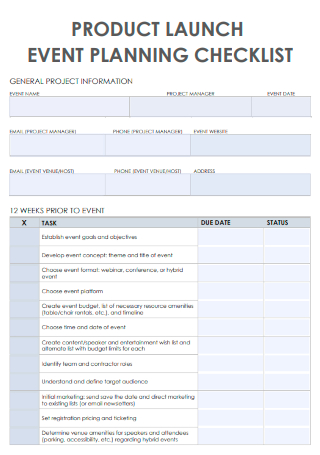
Product Launch Event Planning Checklist
download now -
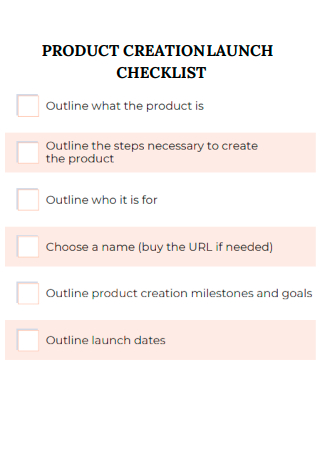
Product Creation Launch Checklist
download now
FREE Product Launch Checklist s to Download
20+ SAMPLE Product Launch
What Is a Product Launch Checklist?
Elements of a Successful Product Launch
Tips for a Successful Product Launch
How to Write a Product Launch Checklist
FAQs
What is a marketing plan?
Why is a product launch checklist important?
What is a product launch strategy?
What Is a Product Launch Checklist?
A product launch checklist is a set of action items that must be completed for a new product to be effectively released to Customers. It assists you in thinking through the actions, procedures, and resources that you and your team must accomplish before launching any product. You will need to have everything ready so that by the time you do a product release, it will go smoothly and your company will avoid the hassle of having to procure unchecked materials. You can view the available product launch checklist template provided so you can save time and proceed to more important matters.
Elements of a Successful Product Launch
A product launch may be a frightening experience. The success or failure of the product’s introduction frequently determines its long-term success. Even if you have taken a lean strategy, the initial impressions you make at launch will be difficult to overcome. The majority of successful product launches have a few things in common: the appropriate timing, the right product, and the right consumers. The following are the most crucial factors of a successful product launch, according to most corporate professionals.
Tips for a Successful Product Launch
Is it time to broaden your company’s offerings, whether by launching a new service or product? A product launch strategy is required. You may believe that introducing a new service or product to your website entails nothing more than adding a new page. However, you should strive for the greatest possible influence on Brand recognition, customer experience, and your bottom line. So, if you are going to launch a product, do it well.
How to Write a Product Launch Checklist
Most professionals in the field would advise you to utilize a new product launch checklist that will uniquely fit your company. As not all templates will cater to the specific needs of the user, you may not undergo changes or edits through the document. If it reaches a point of heavy edits, don’t let that discourage you though because you can still refer to the product launch checklist example to guide you as well as the guide down below.
1. Define Your Target Audience
Understanding what inspires your consumers is vital, whether you refer to it as market research or consumer development. Identifying their objectives, motives, and pain areas may lead to the development and marketing of a viable solution. It is not necessary to conduct years of intensive study to understand your consumer. This article recommends just speaking with 12 to 15 existing or prospective consumers. These talks will provide you with a strong understanding of their major pain issues and how you may offer a solution to them. Once you have learned this important information about your clients, you can create a buyer persona for your Team to serve.
2. Position Your Product
The following stage is to develop a positioning statement. Your statement should clarify who the product is for, what it accomplishes, and how it differs from other items on the market. You might even go into further detail with your positioning statement, such as explaining your target demographic, specifying the product category in which your product falls, or adding proof that your product is unique. After developing your position statement, share it with stakeholders to ensure everyone is on the same page. If your staff have difficulty purchasing the goods, your consumers may as well.
3. Set Your Launch Goals
Before you begin putting your strategy into action, develop a list of your launch objectives. An engineer may establish a launch target of launching the new product defect-free. A salesman may establish a target number of consumers in his or her sights. You may guarantee that everyone in the organization works collaboratively toward the same results by creating goals ahead of the product launch. One of the most effective methods to create goals for your launch team is to write them out in the form of SMART Goals. A SMART objective is specific, measurable, attainable, relevant, and timely.
4. Plan Your Go-To-Market Strategy
This is the plan you will employ to launch and market your product. While some companies prefer to establish a funnel strategy, others prefer to use the flywheel technique. This procedure has numerous moving elements, regardless of the approach you use. A template, such as this one, may help you build an orderly approach for launching your product. As you develop the plan, evaluate the sort of material you will employ to capture the attention of a prospective consumer during the awareness, contemplation, and buy decision stages. In the following stage, you must create a Market Strategy.
5. Set a Media Plan
Prior to starting, it is critical to have a media strategy in place. The process of determining how, where, and when you will share media with your intended audience is known as Media planning. Medium planning assists advertisers in identifying the most relevant media, and media mix, and determining time and space in various media so that available resources are used optimally. Controlling wasteful advertising is made easier with media planning. Remember that you only have one chance to effectively launch a product, so make the most of whatever hype you can generate around the launch.
6. Create Promotional Content
Start creating material that will support and align with your promotional activities once you have planned out your go-to-market strategy and written your SMART goals. This includes Blog postings about your product or sector, as well as demos and tutorials, and landing sites. The site’s available go-to-market template will also assist you in determining which content to publish for each stage of your prospective customer’s buyer’s journey. The genius of social media is that it can make even pre-planned messages appear spontaneous. There’s nothing wrong with leveraging user-generated content to create product launch posts on the fly. Planning your content may save you a lot of hassles.
FAQs
What is a marketing plan?
A marketing plan is a document that outlines a company’s marketing initiatives for the future year. It describes the marketing strategy, advertising, and promotional campaigns of the time. A marketing strategy can assist you in determining your target market and how your product or brand will benefit it. Determine how you can attract new clients. Encourage your current consumers to keep buying your goods or service. You can find that a marketing plan is also beneficial for a product launch, this is why using a marketing product launch checklist is advantageous. Make use of the marketing plan template available so you won’t have to start from scratch.
Why is a product launch checklist important?
One of the primary advantages of a product launch checklist is that it guarantees you remember every critical step and asset when releasing a new product. It allows you to concentrate on your main goal while keeping track of important specifics. You are completely prepared and better positioned to manage any unanticipated circumstance, including blunders if you use a product launch checklist. Because the whole team has access to the same product launch checklist, they can collaborate more effectively. Product launch checklists also divide huge duties into smaller ones, making it easier to assign responsibilities within a group.
What is a product launch strategy?
A product launch strategy is a plan for bringing a new product to market. It involves a sequence of procedures and actions carried out by various team members before the product’s release date. A product launch is necessary to attract buyers and generate market momentum. A product launch allows you to capture the attention of your customers. They will not only learn about your new product but also about your company and potentially other goods. A product launch is an excellent opportunity to convert curious people into devoted consumers.
You have reached the end of the article, which marks you as prepared to get into writing the product launch checklist essential for the success of your products. Keep in mind the information you garnered from the curated lists, so you can make the most out of the document. With that being said, use the available plan checklist template now!
